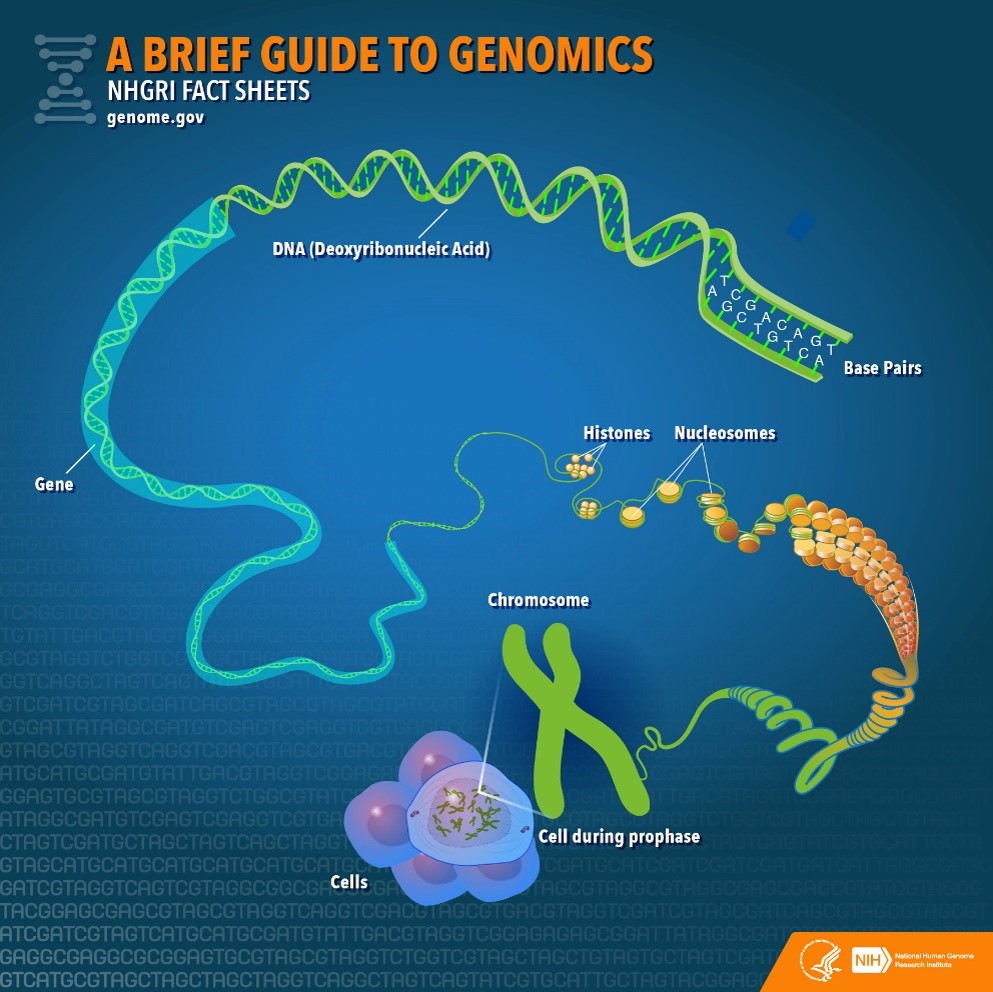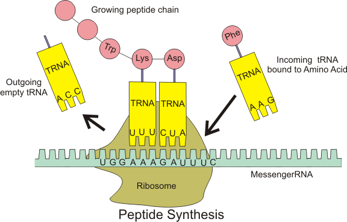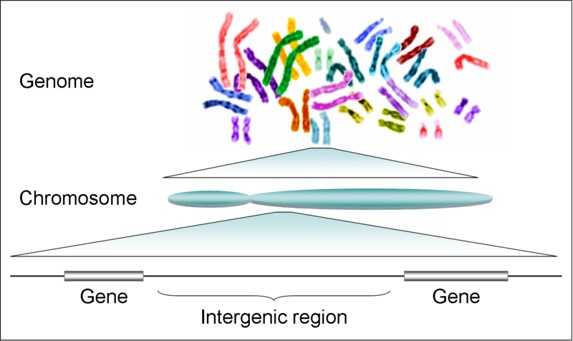Our Design Series has presented the principles and implementation of design genes in the development of organisms within the Blind Watchmaker. In short, the phenotype, our organism, is a direct result of the design genes within the genome.
As the functionality within our system grows so too does its complexity. What we are learning during the development of our system is that one gene for one phenotypic attribute is, in some cases, simply not enough. So once again we look to nature for its solution.
…enter non-coding DNA…
The genome as described in the field of molecular biology and genetics is an organism’s complete set of DNA [1] and that DNA contains both genes and non-coding DNA.
For reference, Figure 1 shows the relationship between genome, DNA and genes. In nature, DNA is grouped into chromosomes and the collection of chromosomes forms the genome.

Non-coding DNA is a sequence of an organism’s DNA that does not encode protein sequence, proteins being the building blocks cell growth. There are endless amounts of non-coding DNA that have undefined functions but there are some specific aspects of non-coding DNA knowledge that have potential applications in the Blind Watchmaker System.
Some non-coding DNA is transcribed to functional non-coding RNA (ncRNA) molecules. One of the most important types of ncRNA is transfer RNA (tRNA). The role of tRNA is to transport amino acids to the protein synthetic machinery in the cell, Figure 2.

Intergenic regions within the DNA are regions of non-coding DNA that are found between the genes, Figure 3.

Structural elements of chromosomes are also part of non-coding DNA. Telomeres are repeated ncDNA sequences at the end of chromosomes which allow protection of the DNA during DNA replication.
Stay tuned for our interpretation and implementation of non-coding DNA in Blind Watchmaker and our organism development!
[1] https://www.genome.gov/about-genomics/fact-sheets/A-Brief-Guide-to-Genomics
[2] https://www.genome.gov/genetics-glossary/Non-Coding-DNA
[3] https://en.wikipedia.org/wiki/Non-coding_RNA
[4] http://sitn.hms.harvard.edu/flash/2012/issue127a/
